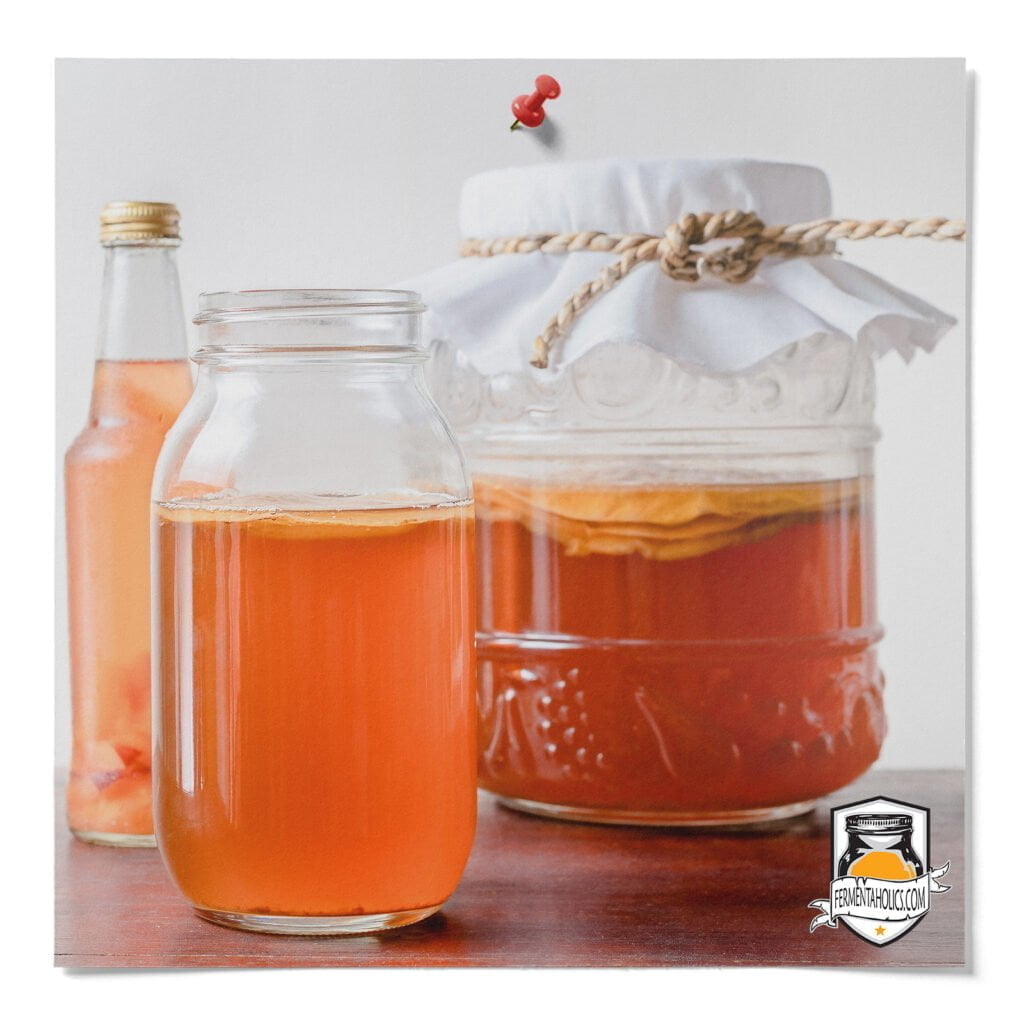

Why does this happen? Cloudy kombucha is a result of over-active yeast. Yeast produces carbon dioxide, which is a gas. The more productive the yeast is, the more CO2, creating a turbulent environment for the yeast. Usually, yeast cells clump together and fall to the bottom, but due to the excessive gas, are forced into suspension. What this can also indicate is that the yeast is dominating the brew.
While the “S” in SCOBY does stand for symbiotic, the bacteria and yeast are actually in competition as well. The bacteria feed off the yeasts’ byproducts, and they live happily together until one gets the upper hand. This means that due to seasonal changes and other turns of fate, your kombucha can become slightly off balance. If your kombucha is off-balance, it has not gone bad. It simply means that you won’t get consistency among batches. You’ll experience variances in flavor, brew times, and alcohol levels because yeast enjoys warmer weather; cloudiness and over-active yeast are most likely to occur during the summer months.
If this is the case with your kombucha, don’t fret. Balancing kombucha is a continuous journey. Cloudy kombucha is still perfectly delicious and safe to drink. Within a few brews, you can restore the balance of your brew by making a few easy adjustments.
By manipulating a few elements in your brew, you can encourage the bacteria’s health while also slowing down the overactive yeast.
Yeast has a pretty flexible productive temperature range, but are especially active in warmer temperatures, around 80°F. Bacteria prefer a bit colder environment, in the 70-75°F range. You can use this temperature differential to your advantage in both directions.
Since we are trying to increase the bacteria count, in this case, brewing at colder temperatures will help achieve this goal. Try to locate a cold area in your house to place the brewing vessel. This could be a room with fewer windows or a spot underneath an air vent. Alternatively, you can set the brewing vessel in a cooler with an ice pack or glass of ice next to it (not touching it) and monitor the temperature to make sure it isn’t going below 70°F. This will slow down the yeast, giving the bacteria a chance to recuperate.
When the fermentation has finished to your liking, filter out the yeast. This gives you filtered starter tea for the next batch that will help restore the balance for your next batch. To filter, lay a tea towel, cheesecloth, or paper towels over a strainer and pour the kombucha through it to prevent the yeast from passing through. Remember to put a large bowl or pitcher underneath the strainer, so you don’t lose your kombucha! 😀
Yeast feed on nutrients from tea, so giving them less to work or switching up their nutrient source slows them down and gives the bacteria a chance to catch up.
We’ve formulated our Fire Kombucha Tea Blend specifically to address bacteria health by relying heavily on lighter, less tannic teas. This forces the yeast to synthesize some of their own nutrients, reducing their productivity naturally and allowing the bacteria a chance to catch up.
Be patient, and don’t get discouraged. Your kombucha will bounce back. In the meantime, learn as much as you can and enjoy the process.
